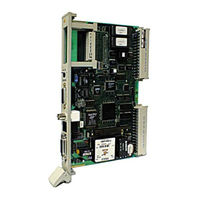VIPA CP143 TCP/IP Manuals
Manuals and User Guides for VIPA CP143 TCP/IP. We have 1 VIPA CP143 TCP/IP manual available for free PDF download: Manual
VIPA CP143 TCP/IP Manual (210 pages)
Brand: VIPA
|
Category: Control Unit
|
Size: 3 MB
Table of Contents
Advertisement
